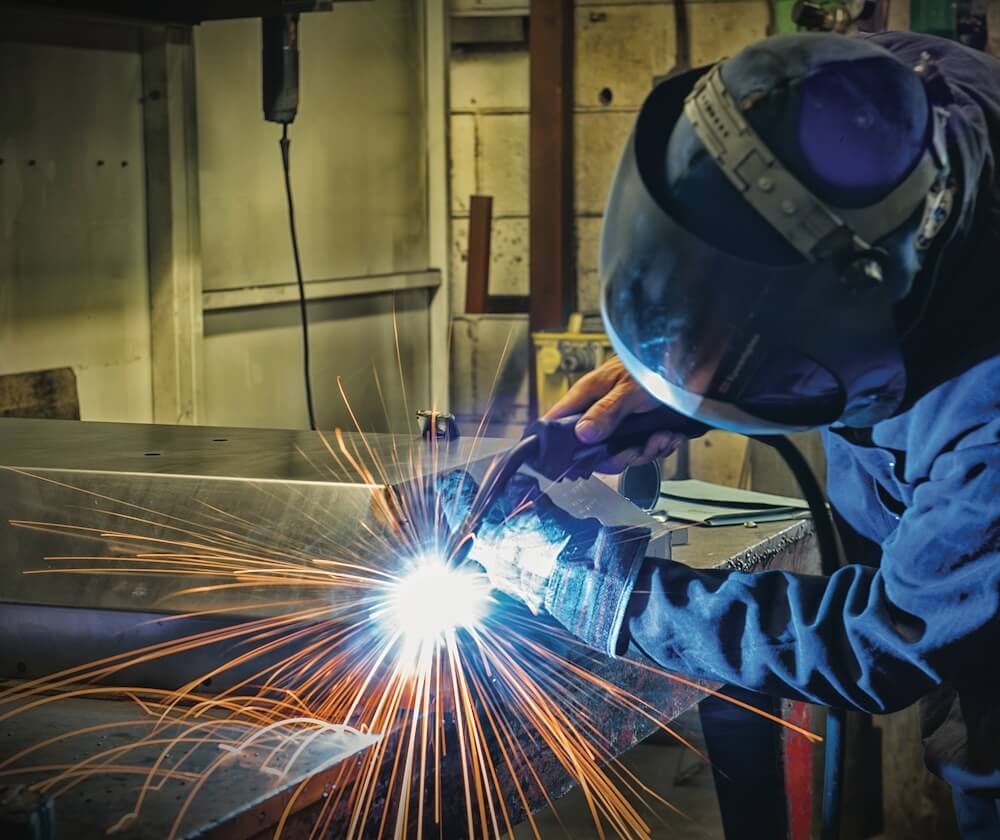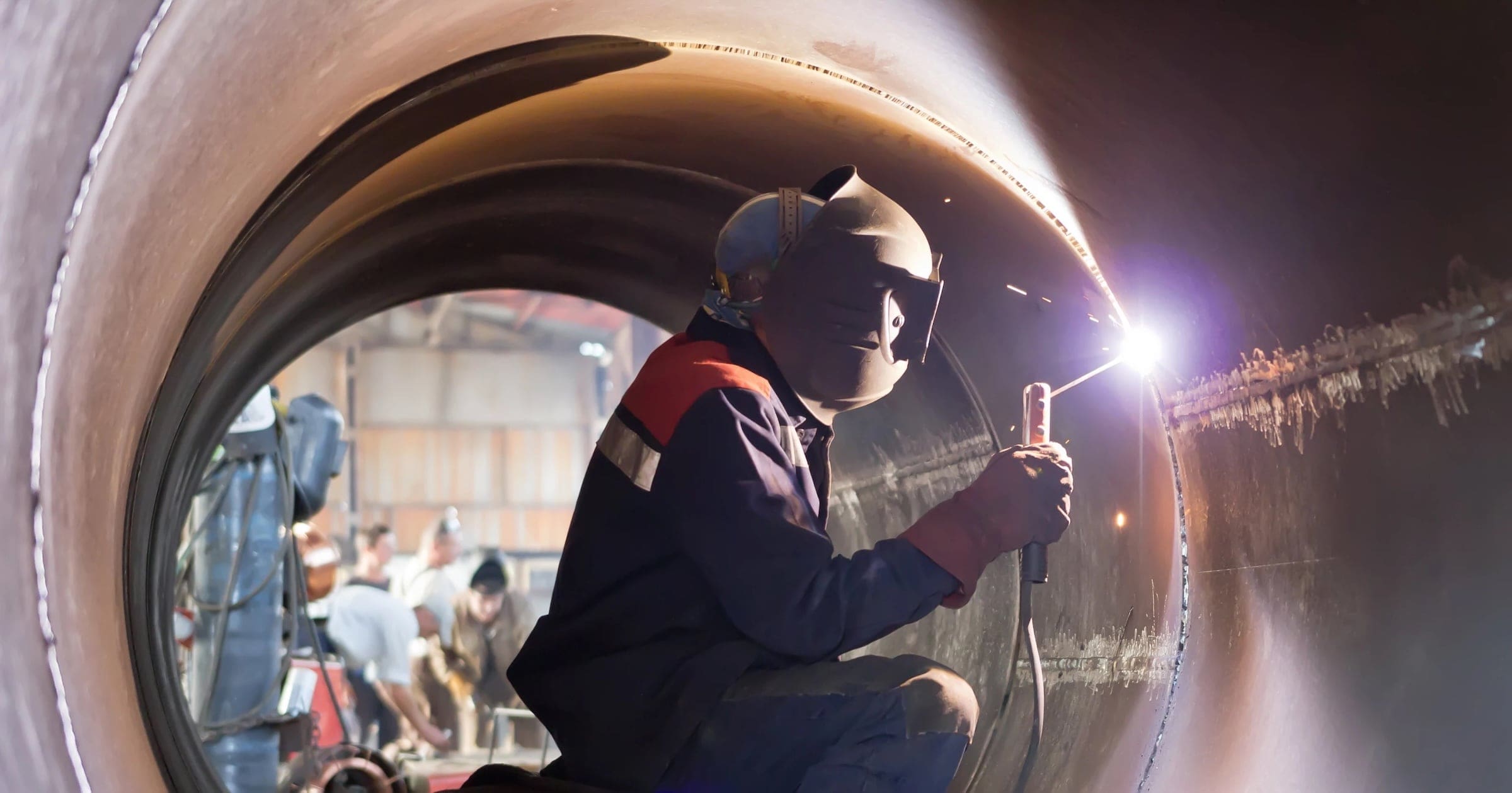Quick tips for poor fusion from Montana Mobile Welding and Repair
Wiki Article
All Concerning Welding: Trick Insights Into Techniques and Finest Practices for Success
Welding includes a selection of strategies, each fit for details products and applications. Understanding these techniques, such as GMAW, SMAW, and TIG, is crucial for achieving ideal outcomes. The appropriate devices and safety techniques can not be overlooked. As prep work and fixing play important duties in the welding procedure, grasping these aspects can considerably enhance the top quality of the end product. What are the key factors that guarantee a successful weld?Understanding Different Welding Techniques
Welding techniques incorporate a variety of methods, each matched to details applications and materials. Among one of the most usual strategies are Gas Steel Arc Welding (GMAW), Secured Metal Arc Welding (SMAW), and Tungsten Inert Gas Welding (TIG) GMAW, also referred to as MIG welding, is preferred for its speed and adaptability, making it ideal for slim materials. SMAW, or stick welding, is preferred for its simpleness and effectiveness in exterior environments, especially with thicker steels. TIG welding offers precision and control, making it suitable for intricate job and non-ferrous steels (Montana Mobile Welding and Repair Belgrade Fabrication). Each technique has its distinct advantages and considerations, enabling welders to pick the very best approach based on the job's demands, product kind, and desired results. Comprehending these methods is essential for effective weldingEssential Welding Devices and Tools
While different welding methods call for certain skills, the right equipment and tools are just as vital for accomplishing high quality outcomes. Crucial welding devices includes welding devices, which vary depending upon the strategy-- such as MIG, TIG, or stick welding. Protective gear, including aprons, handwear covers, and helmets, assurances security and convenience throughout the procedure. Additionally, fixtures and clamps help protect materials in position, making sure accuracy in welds. Consumables like welding rods, cord, and protecting gas are also critical elements that influence the top quality of the weld. Moreover, tools such as mills and cutters assist in surface preparation and post-weld completing, adding to a professional outcome. Investing in high-grade tools eventually enhances the performance and performance of welding jobs.Safety Practices in Welding
Correct security techniques are important in the welding market to safeguard employees from prospective threats. Welders need to use ideal individual safety tools (PPE), consisting of headgears with appropriate shading, handwear covers, and flame-resistant apparel. Adequate ventilation is crucial to minimize exposure to unsafe fumes and gases generated during the welding process. Additionally, employees ought to be learnt the correct handling of welding tools to stop accidents. Fire safety and security measures, such as keeping flammable materials far from the welding location and having fire extinguishers easily offered, are necessary. Regular evaluations of devices and offices can assist determine possible dangers before they lead to mishaps. By adhering to these security practices, welders can create a more secure working atmosphere and lessen dangers connected with their trade.Preparing Materials for Welding
Preparing products for welding is a crucial step that significantly influences the quality and integrity of the end product (Montana Mobile Welding and Repair Belgrade). Correct prep work entails cleaning the surface areas to remove impurities such as rust, oil, and dirt, which can endanger the weld. Methods such as grinding, fining sand, or utilizing solvents are generally used to attain a clean surface. Additionally, making sure that the products mesh comfortably is important; voids can cause weak welds. It's likewise crucial to take right into account the alignment and positioning of the components, as this will affect the simplicity of welding and the last end result. Selecting the ideal filler product and ensuring compatibility with the base steels is vital for attaining strong, sturdy welds.Tips for Getting High-Quality Welds
Attaining top quality welds calls for interest to detail and adherence to best techniques throughout the welding procedure. Appropriate joint prep work is important, making sure surface areas are clean and free from contaminants. Selecting the ideal filler product and welding method based on the base metals is essential for suitable bonding. Preserving constant travel speed and angle while welding can advertise and avoid issues uniformity. Additionally, managing warm input is important; too much warm can bring about warping and damaged joints. If required, regularly checking the welds throughout the process permits for instant adjustments. Finally, utilizing proper post-weld treatments, such as cleansing and stress and anxiety relief, can improve the resilience and stability of the weld, ultimately making sure a successful outcome.Fixing Common Welding Issues
Welding typically presents difficulties that can impact the top quality and honesty of the end product. Common issues such as porosity, inconsistent weld grains, and overheating can develop, each needing certain troubleshooting techniques. Comprehending these problems is essential for welders to enhance their abilities and attain excellent outcomes.Porosity Problems Discussed
Porosity can commonly be forgotten, it remains a critical issue in welding that can compromise the stability of a completed item. Porosity describes the visibility of little gas pockets within the weld bead, which can lead and deteriorate the joint to premature failing. This issue typically occurs from impurities, moisture, or inappropriate shielding gas protection throughout the welding procedure. To reduce porosity, welders should validate that the base products are completely dry and clean, make use of suitable shielding gases, and preserve constant welding specifications. Regularly evaluating the devices and environment can additionally assist identify prospective concerns before they show up in the weld. Resolving porosity effectively is essential for attaining solid, resilient welds that meet quality standards.
Inconsistent Weld Beads
Irregular weld grains can greatly influence visit this site the quality and toughness of a completed product. Different aspects contribute to this concern, consisting of incorrect travel speed, wrong amperage settings, and inconsistent electrode angles. When the welder moves as well swiftly, a grain might show up slim and lack penetration, while relocating also slowly can create too much buildup. Additionally, using the incorrect amperage can cause either undercutting or extreme spatter, both of which concession weld stability. The welder's technique, such as inconsistent lantern motion, can likewise lead to uneven bead look. To mitigate these problems, welders should concentrate on maintaining consistent, controlled movements and making sure proper equipment setups to attain harmony in their welds. Consistency is key to achieving trusted and strong welds.Getting Too Hot and Warping Issues
Excessive heat during the welding procedure can cause significant getting too hot and contorting problems, affecting the structural stability of the work surface. These problems commonly show up as distortion, which can jeopardize positioning and fit-up, making further setting up challenging. Variables adding to overheating include the selection of welding criteria, such as voltage and take a trip rate, as well as the sort of material being welded. To alleviate these problems, welders must maintain regular traveling rate and ideal heat input while keeping track of the work surface temperature. Additionally, pre-heating or post-weld warmth treatment can aid relieve stresses created by quick cooling - Welding. Regular inspection and adherence to finest practices are crucial in protecting against getting too hot and guaranteeing the durability and dependability of welded structuresFrequently Asked Concerns
What Are the Job Opportunities in the Welding Market?
The welding industry supplies diverse career possibilities, including positions as welders, examiners, engineers, and instructors. Experts can operate in production, building, aerospace, and vehicle markets, benefiting from strong need and affordable salaries in different roles.How Can I Enhance My Welding Rate Without Giving Up High Quality?
To Find Out More enhance welding rate without giving up quality, one ought to practice effective techniques, keep devices, maximize settings, and improve hand-eye coordination. Regular training and looking for feedback can also significantly add to attaining quicker, top quality welds.What Accreditations Are Offered for Welders?
Many certifications exist for welders, including those from the American Welding Society (AWS), the National Facility for Building Education And Learning and Research Study (NCCER), and different industry-specific organizations. These qualifications enhance employability and demonstrate ability efficiency.Just How Does Welding Influence the Properties of Metals?
Welding affects the residential or commercial properties of steels by altering their microstructure, which can cause changes in ductility, stamina, and hardness. Warmth input and air conditioning rates throughout resource the process significantly affect these material characteristics.Can I Bonded Dissimilar Metals Together?

Report this wiki page